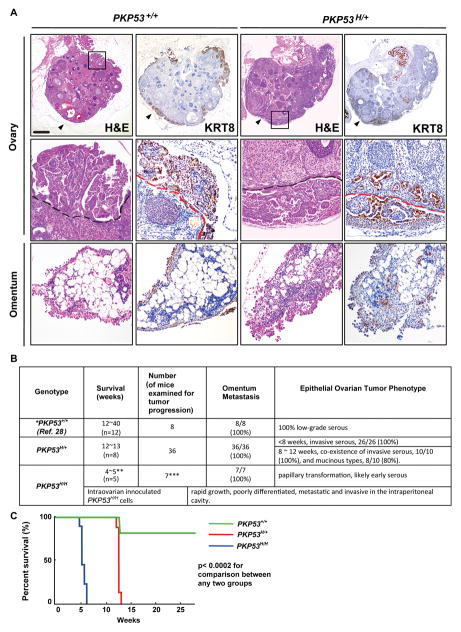Figure 1.
Mutant Trp53R172H allele promotes epithelial ovarian tumor progression. A, Representative images of tissue sections stained with H&E or KRT8 of ovaries and omentum from PKP53+/+ and PKP53H/+ mice at 12 weeks of age. Regions in frame are shown at higher magnification below. Black and red dashed lines: the surface of the ovary. Black arrow heads: ovarian bursa. Scale bar: 400 μm (top row) and 80 μm (bottom two rows). B, Survival ages and phenotypic characteristics of mutant mice with different p53 status. *Data presented here on PKP53+/+ mice are from previous published studies and new information collected from the current study (19). **PKP53H/H mice die rapidly from unknown causes. ***Female progenies with homozygous Trp53R172H/R172H mutation are born at lower than Mendelian ratio due to female-specific exencephaly, thus making it harder to obtain large sample size for the cohort. C, Kaplan-Meier analysis shows that Trp53R172H/R172H homozygous mutation is associated with the shortest term of survival, and Trp53R172H/+ heterozygous mutation is associated with significantly reduced term of survival compared to mice expressing wild type Trp53. (p<0.0002 for comparison between any two groups, log-rank test).

